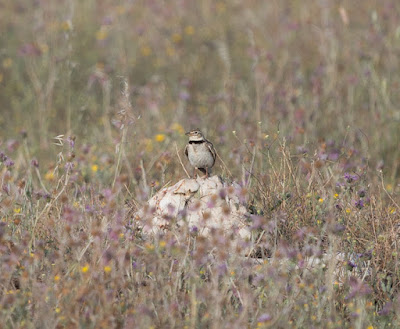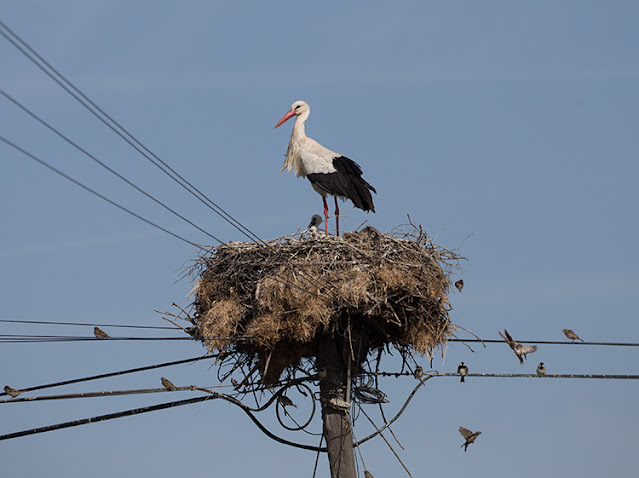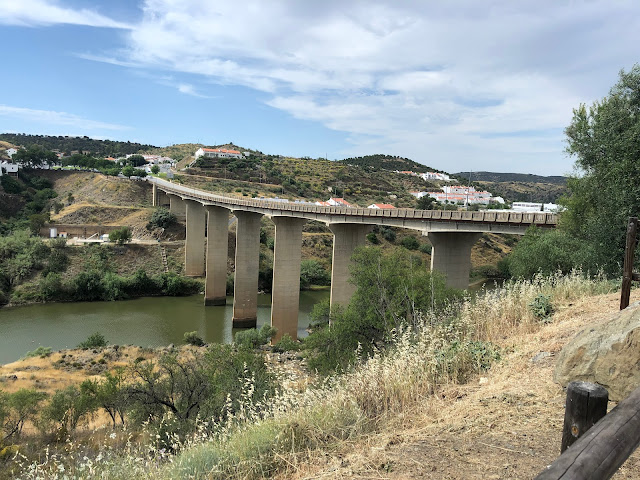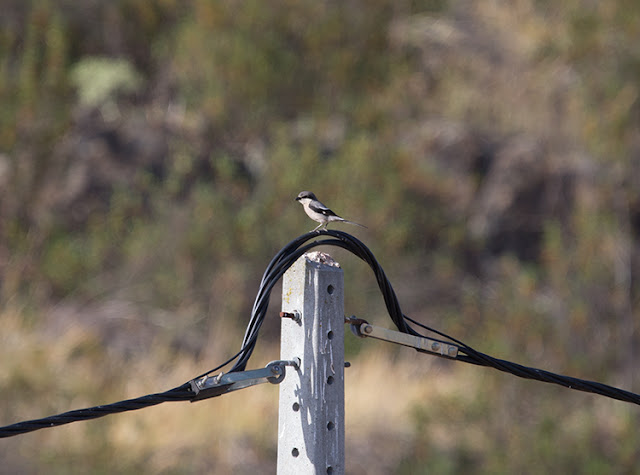The lads have been enjoying a very extended summer break but are back now just in time for the autumn. There's plenty to catch-up on including the usual 'Mystery' call, Sean's 'sky-balling' recording career and crazy dreams to 're-wild' Ballycotton lake!
Wednesday 24 August 2022
The Phil More's Corner Podcast - Series 3 Episode 4
Sunday 12 June 2022
Thursley Common, Surrey
A few weekends ago I decided to head back to the beautiful Thursley Common Nature Reserve in Elstead, Surrey. I had paid a visit in 2021 to see the famous 'Colin the Cuckoo' (scroll to the end of this post).
This time I thought I'd try to ignore Colin and pay a bit more attention to what else the reserve has to offer. Its a good spot for Dartford Warbler, Common Redstart and Woodlark. Photos, or better still sound recordings, of any or all of those would be more than acceptable.
I came across a male Common Redstart that was holding territory in a stand of mature Scot's Pines. I positoned my parabola and sat back for an whole hour to listen to him.
 |
It was only after discussing this with Sean Ronayne later on that he pointed out that Redstarts perform a lot of mimicry. Its well described in this Sound Approach article. I listened back and could pick up House Sparrow, Yellow Wagtail, European Bee-eater, Blackbird and Green Woodpecker. Have a listen to this brief snippet where the bird does the classic Green Woodpecker 'laugh' right at the end.
They do apparently mimic a lot of Bee-eater species that they must come across on their African wintering grounds but I could only recognise European Bee-eater and that recording wasn't exactly top quality.
If you can hear Woodlarks singing in the background then that's because there were plenty of them, including this bird singing from the top of a tree.
 |
| Woodlark recorded singing from the top of this tree |
Despite my best intentions no trip to Thursley would be complete without Colin. I stopped off at the Parish Field on arrival that morning at 6.45am and needed only to wait for thirty minutes before he appeared.
I know its like 'shooting fish in a barrell' but I don't care, what a stunning chap. I wish him well on yet another return trip to Africa!
Tuesday 7 June 2022
Local Patch Birding
This year 5km from home has become 10km from home adding some new sites for me such as Whitlingham Country Park, Thorpe Marshes and Hosford Woods. That's all good but on the down side it had been agreed that nocmig records should only count for half a point. My total last year was 129 species and I estimated a possible 140 for 2022 but as we near the halfway mark of the year I'm only on 105 and its not looking like I'll hit 140.
However, it's not about the numbers it's about the enjoyment and that certainly hasn't dipped. I've added several species to my local list that I hadn't previously recorded. Bittern, Goosander, Smew, Shag, Glossy Ibis, Nightjar and Firecrest were all new.
 |
| Goosander, UEA Broad, January 2022 |
 |
| Smew, Taverham, Norwich, February 2022 |
 |
| Smew, Taverham, Norwich, February 2022 |
 |
| Glossy Ibis, West Earlham Marsh, Norwich, April |
 |
| European Nightjar, May 2022 |
Whilst I missed out on any nocmig recordings of Ring Ouzel, I did manage this female bird on West Earlham Marsh during the Easter weekend.
 |
| The dictionary definition of 'record shot' - female Ring Ouzel, West Earlham, Norwich |
My previous blog entry of Nocmig Update will give you a better flavour for what I recorded flying over the garden so far but Hawfinch, Spotted Flycatcher, Lesser Whitethroat and Spotted Crake were the highlights.
Notable absences so far include Coal Tit and Grey Wagtail but I expect with a little effort I'll pick these up before the year is out. A dry spring has meant I've not done well on waders, Common Sandpiper, Whimbrel and Curlew are all missing so far but still possible.
Monday 6 June 2022
Nocmig Update
Now is a good time to do a quick nocmig update before we reach the half-way point of 2022, so lets take a look at the first half of the year.
In January and February I only recorded on four nights and even then there was very little of note save for the odd Teal and Oystercatcher.
In early March though I got busier and recorded as often as conditions would allow. Wigeon were on the move from the middle of the month as were Teal (although to a slightly lesser extent). In mid-March until at least early April there was a regular movement of Water Rail.
I had four seperate flocks of Common Scoter on the night of the 3rd / 4th April. Here's one of those flocks.
Redwing return passage started in early March and peaked at the end of the month and on some nights they were passing non-stop. As expected I managed to record the odd Fieldfare mixed in with the Redwing.
Just as I was anticipating Ring Ouzels to pass, my nocmig recorder packed in. By the time I had replaced it, the Ring Ouzels had moved through and I'd missed my chance. But I need not have despaired as the best was yet to come!
On the night of the 4th May I recorded this Lesser Whitethroat at 00:30 hours.
I'm still not clear if this was a local bird moving around or a migrant.
Thirty minutes later on the same night I recorded my first Hawfinch, which as you'd expect I was over the moon about.
I had it down as 'unknown' at first but soon cleared that confusion up when I consulted with Sean.
On 14th May I recorded my first and probably overdue Spotted Flycatcher.
And on 22 May I struck gold with this Spotted Crake.
Work commitments meant I wasn't able to start checking areas of suitable habitat at dusk for singing Crakes but given the time of year it's possible it's a local bird rather than a migrant. They are a description species in Norfolk but surely they are under-recorded?
For now my gear is packed away but I will unpack it again towards the end of the month as the waders start heading back.
Sunday 5 June 2022
Southern Portugal - Part 4
As you'd expect, another 6am start. This time though on a cooler, windier and more cloudy day. We returned to our Bustard spot from Day 2 and enjoyed decent views of two birds.
 |
| Great Bustard |
We also gave the Roller spot from Day 3 a second go and had a fly-past view of three Black-bellied Sandgrouse and a Greater Short-toed Lark near the farm. Raptors included Griffon Vulture, Short-toed Eagle, Black Kite and Booted Eagle. At the reservoir the Collared Pratincole and Little Ringed Plovers were still present and a Dartford Warbler flicked around some small Olive trees.
Time caught up with us and we soon needed to return to the cottage, clean up and pack. We drove back to Faro airport, reflecting on a great trip and discussing plans for our next one - the deserts of Morocco and Western Sahara to mop up what we missed in 2013 and 2018, Cyprus, Kazakhstan, Mongolia, Japan, Armenia or even Azerbaijan. We're undecided at the moment but enjoying the conundrum.
All in all a great trip, if our schedules had permitted we would have gone in mid-April to enjoy more migrants and avoid the heat (it was nearly 40 degrees on some afternoons). We got all our gen from the excellent David Gosney's book 'Finding Birds in Southern Portugal', also from a friend of Nick's called Hugo who he knows through his time counting raptors in Batumi and whatever else we could glean from other birders we met in the field. Car rental was through Centauro, flights with Ryanair. For food we mostly self-catered. Portugese beer was more than Ok - Sagres or Superbock and the regional wine was excellent. I had eight lifers in total as follows:
- Great Bustard
- Little Bustard
- Black-bellied Sandgrouse
- Red-necked Nightjar
- Calandra Lark
- Western Black-eared Wheatear
- Iberian Grey Shrike
- Iberian or Azure-winged Magpie
Plus a number of species that I hadn't seen for a while or had previously seen only once before like Great-spotted Cuckoo and White-rumped Swift.
Tuesday 31 May 2022
Southern Portugal - Part 3
Once more we were out the door by 6:30am. First stop was a return to the previous day's location where we had Montagu's Harrier. That morning there were five birds but they'd moved several fields away so views weren't as good. However, the morning air was filled with the sound of singing Calandra Larks.
 |
| Calandra Lark |
Plus we were treated to this flight displaying Little Bustard.
 |
| Little Bustard |
Its easy to forget and take for granted how many great species we were seeing on a very regular basis. Woodchat Shrikes, Zitting Cisticolas, Sardinian and Cetti's Warblers were common and practically every piece of water had at least one Black-winged Stilt on it. Corn Buntings and Crested Larks were abundant (Thekla are present too and apparently both apperance and song overlap so even experienced local birders struggle to seperate them, however we both agreed that most of what we saw were probably Crested and not Thekla Larks, but what do we know!). White Storks were well established and many nests had little Storks present. Plus, and I didn't know this before, Spanish Sparrows create colonies within White Stork nests.
 |
| Corn Bunting |
 |
| White Stork |
 |
| Spanish Sparrow at White Stork nestCrested Lark |
We made a second stop at the raptor watch-point Senhora do Aracelis where we had better views of the male Western Black-eared Wheatear from the previous day.
 |
| Western Black-eared Wheatear |
And a Golden Oriole sang from the surrounding Eucalyptus trees.
With the daytime temperature in the high thirties, we returned to the cottage where I hit the wall and slept for several hours. Whilst I slept, Nick did the dirty dishes (thanks) and soon enough we were back out birding again although it was still hot. We stopped along a track off the N123 to Monte da Apariça. where the land owner has installed nest boxes on the power line pylons for Rollers.
 |
| European Roller |
 |
| European Roller |
Plus there were two Hoopoes, one of whom obliged for a brief photo.
Hoopoe
A spot outside Mertola for Iberian Green Woodpecker was unsuccessful insofar as we didn't see or hear that species there but Nick did find a Western Orphean Warbler (which was new for the site going by eBird). Plus, a purring Turtle Dove on the wires was nice.
 |
| Turtle Dove, Mertola |
We made a quick stop in Mertola so I could run to the pharmacy to get cream for my insanely itchy mosquito bites. I shopped while Nick apologised to the local Polizei for my bad driving and even worse parking - sorry Nick!
Our final stop of the day was an abandoned Copper mine - the Sao Domingo mine where we would have the best chance of seeing White-rumped Swift. This was a bizzare and surreal location. I could try to describe it but I think the photos do a better job. Despite the environmental impact mining has clearly had, nature was starting to re-establish itself and we had great birds there. Two White-rumped Swifts, 2-3 Black-eared Wheatear, Blue Rock Thrush, Crag and House Martins, European Bee-eaters, Red-rumped Swallows and Common Swifts.
Sao Domingo Mine
 |
| White-rumped Swift |
If it wasn't getting so late I'd have happily stayed here an hour longer, but we were hungry and wanted to stop off at a restaurant that had been recommended to us earlier in the trip. They couldn't understand us and we couldn't read the Portugese menu but they took one look at us and figured 'Steak and chips' for these lads. And that's what we got, along with local cheese, sausage and bread. Perfect!
We managed to share one beer between us before crashing into our beds shortly before midnight!
Monday 30 May 2022
Southern Portugal - Part 2
Despite a broken nights sleep, I had set the alarm for 6am and we were up and on the road by 6.30am. We stopped briefly when Nick picked up a Great Spotted Cuckoo perched on the telegraph wires above a small olive grove. From there we pressed on to a spot we had for Great and Little Bustard, both of which we managed to see, albeit distantly. Two more lifers!
As the morning warmed up we headed for a small hill between Castro Verde and Mertola called Senhora de Aracelis. This afforded us nice views of the plains and as the air warmed up we hoped to pick up some soaring raptors lifting on thermals. The track up to this hill passed through open country side where we had plenty of Crested Lark, Corn Buntings and 'rubicola' Stonechats. We also had a female Western Black -eared Wheatear which was a long awaited lifer for me (although I still really wanted to come across a male bird) and a smart male Golden Oriole.
 |
| View over the plains from Senhora de Aracelis |
 |
| The chapel at Senhora de Aracelis |
This powerful looking Short-toed Eagle watched over us as we drove up the hill to the small chapel.
 |
| Short-toed Eagle, Senhora do Aracelis |
We picked up Booted and Bonelli's Eagles plus several distant Griffon Vultures and a Black (Cinereous) Vulture but no sign of either Golden Eagle or Spanish Imperial Eagle.
 |
| Black Vulture |
 |
| Griffon Vulture |
With not many raptors to keep us entertained (for what reasons we were not sure) we decided to move on. We followed a dirt track near Alvares that took us past a small reservoir where we had a single Gull-billed Tern and this Collared Pratincole that was taking no nonsense from a rodwy bunch of Little Ringed Plovers.
 |
| Little Ringed Plover & Collared Pratincole |
 |
| Collared Pratincole |
Our next stop was at the Information Centre for Ligue por Protection de Nature (LPN) near Entradas. We took a few wrongs tracks before finally reaching the Information Centre but at least this smart Bee-eater was a nice diversion whilst we figured out the map.
 |
| European Bee-eater |
Not to mention the Corn Buntings and Stonechats.
At the Information Centre we watched a pair of Lesser Kestrels hunting in the surrounding fields.
 |
| Male Lesser Kestrel |
 |
| Female Lesser Kestrel |
 |
| Female Lesser Kestrel |
 |
| Male Lesser Kestrel |
 |
| LPN Information Centre |
By now it was after 6pm, we had time for one more spot before we needed to head to the location we'd been given for Red-necked Nightjar. At that second last place we had lovely views of both male and female Montagu's Harrier. Hardly a more elegant bird of prey is there?
 |
| Male Montagu's Harrier |
Then it was time to find our Red-necked Nightjar place, which we did. Unfortunately there were no singing birds but a female gave a very close fly-by and a Nightingale sang from deep cover.
It had been a long day, we got home and Nick whipped up a couple of steaks on the outdoor grill which we devoured with a few bottles of Sagres. By the time midnight came along I was whacked!
Thursday 26 May 2022
Southern Portugal - Part 1
It had been over three years since myself and Nick had last enjoyed an overseas birding trip (see Kuwait 2019) and since then a lot of water had flowed under the bridge. So on Tuesday 17th May it was with much anticipation that we set out (me from Norwich and Nick from Cornwall) for Faro in Southern Portugal. We arrived to our airport hotel late that night and convened at 6.15am the following morning to catch-up over breakfast. We sat outside chatting as Swallows, Swifts, House Martins and Red-rumped Swallows swooped down to drink from the hotel swimming pool.
Our first spot was west of Faro airport, an area known as Rio Formosa and Ludo Farm. Driving the dirt track that goes through Ludo and eventually leads on to San Lorenzo golf course, we scoped the salt pans where we had Kentish Plover, Collared Partincole, White Stork and Cattle Egret. In the scrub on the inland side there was Nightingale and the ubiquitous but still pleasing Sardinian Warbler.
At the end of the track we parked and walked along the edge of the golf course where we enjoyed views of Spanish Wagtail, Serin, Turtle Dove, Hoopoe and the many Azure-winged Magpies. The latter bird was a lifer for me and they were ever present throughout the trip, I was sorry I didn't make a better effort to photograph them as they are a smart looking corvid.
 |
| Azure-winged or Iberian Magpie |
 |
| One of many Hoopoes on the fairways at San Lorenzo golf course |
At the São Lourenço Bird Hide which overlooks an ornamental lake we had Black-faced Weaver, Red-crested Pochard and Common Pochard, Little Bittern and Black-crowned Night Heron.
 |
| Female Red-crested Pochard, Sao Lorenco Golf Course, Portugal |
From there we headed east around Faro and through Olhoa on the N125 to the Rio Formosa Nature Park at Quinta de Marim. We walked the paths around the park which took us through scrub and woodland, the habitat looked good but unfortunately the day had really heated up so we didn't spend too long here.
From Quinta de Marim we turned inland and drove about ninety minutes north-west to the Alejento region of Portugal which we were to spend the remainder of our trip based around. We stopped for supplies in the town of Mertola, stocking up on local meats, cheese, fruit and veg and of course some excellent local wine. We pulled in to the carpark past the bridge over the gorge on the western side of the town where we enjoyed excellent views of a Blue Rock Thrush singing from the butresses of the bridge and at times from the edge of the bridge and on the lamposts as the traffic whizzed past him.
 |
| Bridge over the gorge on Ribeiro Guadiana outside Mertola |
Crag Martins, House Martins, Barn Swallows and Red-rumped Swallows buzzed below the bridge whilst a Nightingale sang lazily from the scrub near the river bank. Just above us where we had parked there was a rather handsome male Rock Bunting (which turned out to be a lifer for me).
From there we headed to our AirBnB which was to be our base for the next three days and kudos to Nick for booking such a comfortable and charming place.
 |
| Our own lemon tree - for evening G&T's. |
 |
| Shady verada - perfect for lazy birding |
 |
| Casa Chocholas with our rental car 'Pierre' |
Nick took care of dinner (excellent Black pork and salad washed down with cold Sagres and local red wine). We scoped four Griffon Vultures soaring along the ridge in the evening sunshine and I was beguiled by lifer number three, this fine Iberian Grey Shrike, as it hunted from the telegraph wires in the field opposite the cottage.
 |
| Iberian Grey Shrike |
As the sun dipped and the day finally cooled, a Golden Oriole sang briefly and a Nightingale pitched in a few bars. I stayed up a little late to enjoy a second bottle of Sagres and finally turned in around midnight. At 1.30am I was awoken by the mosquitoes who were having a party in my room. The next day I counted 27 bites on my arms and legs which are still driving me nuts a week later!















